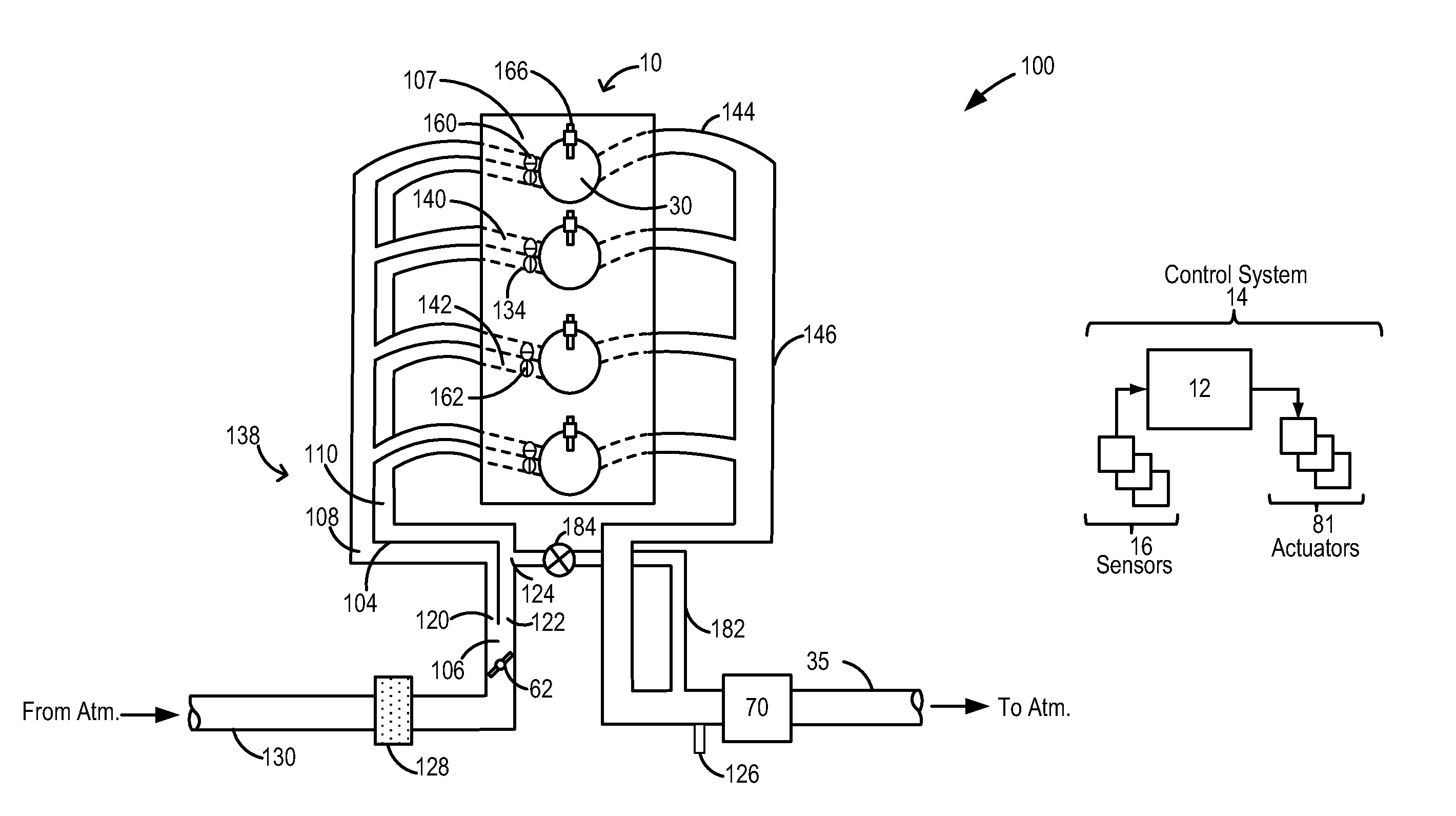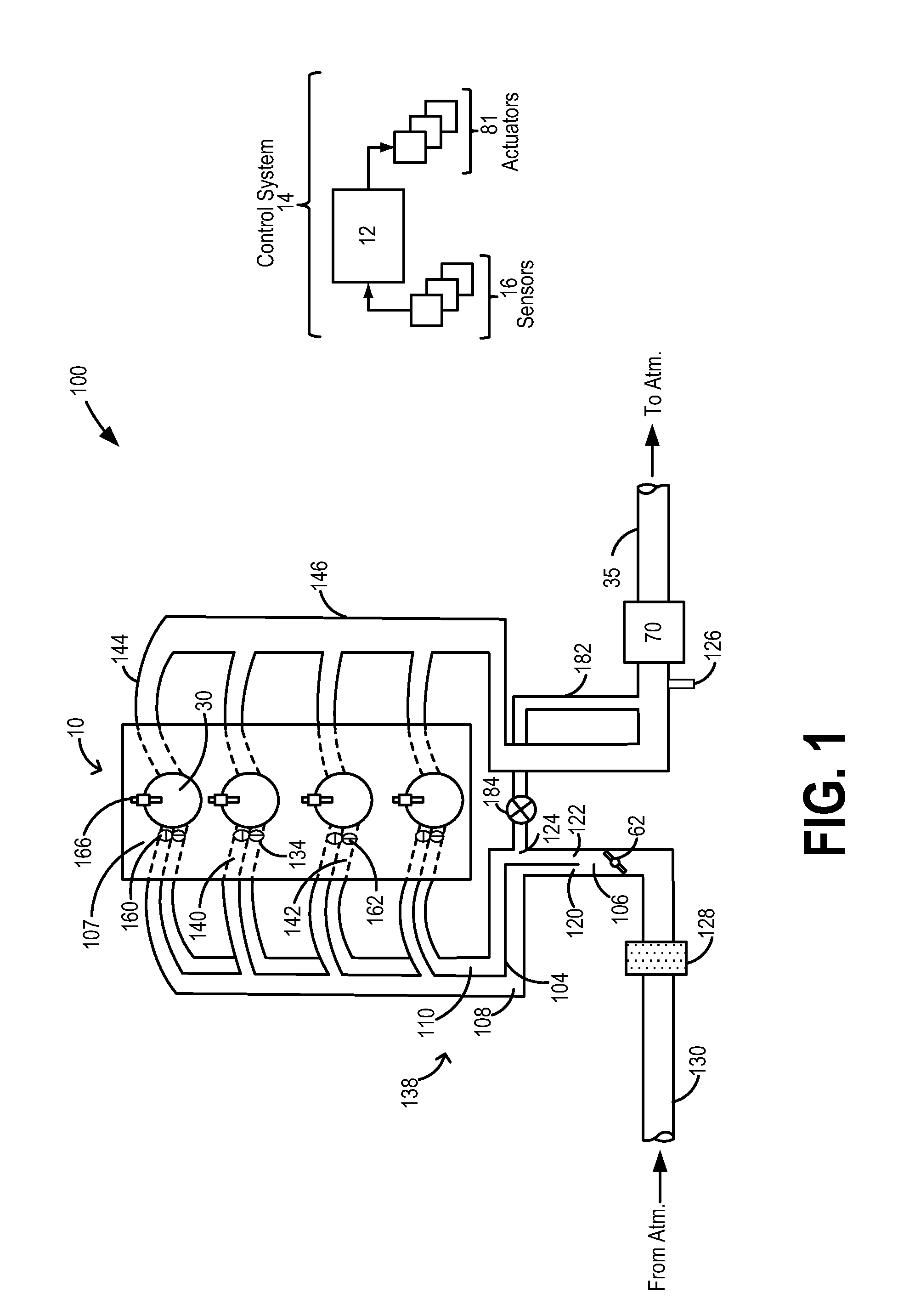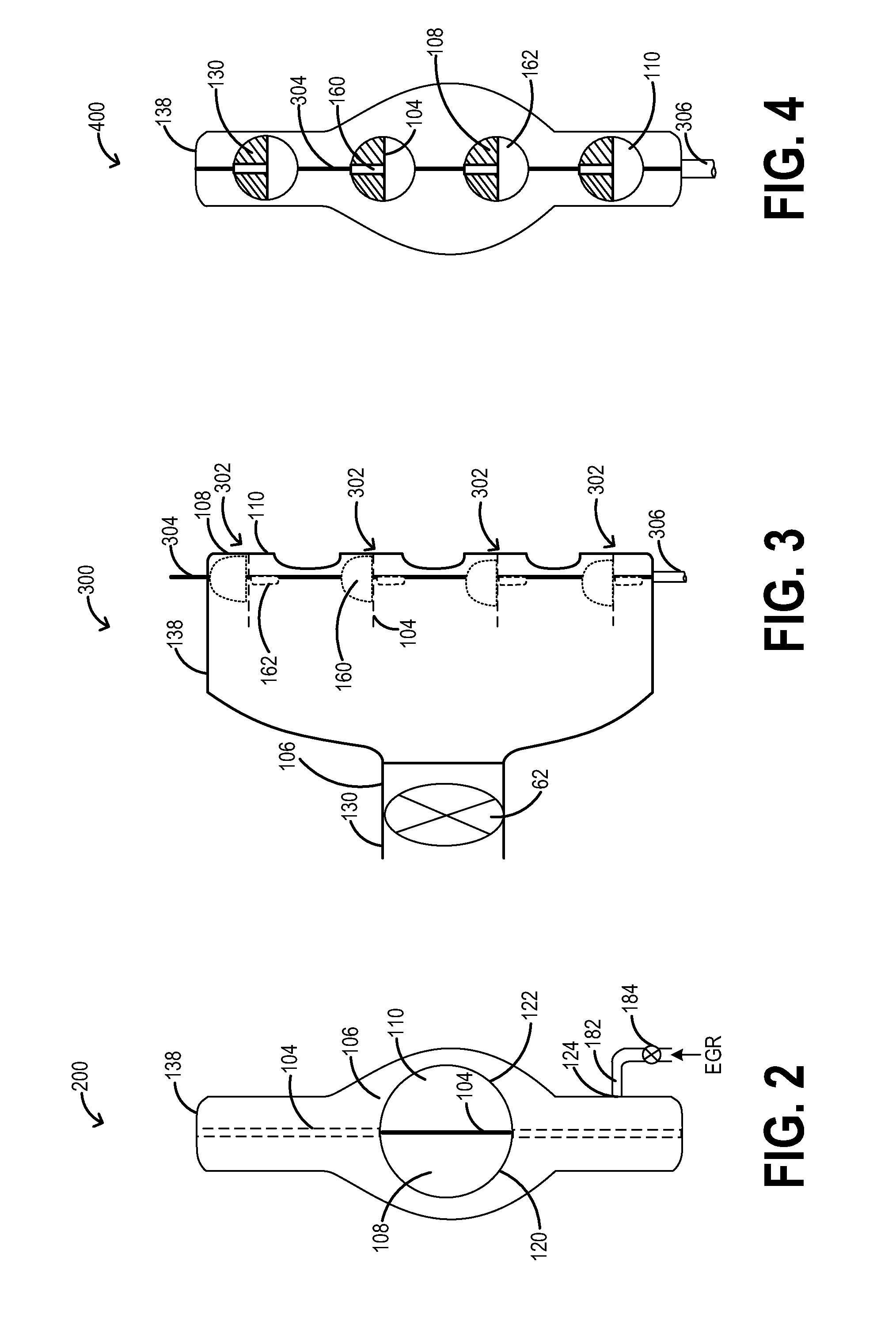Method and system for egr control
a technology of egr and control method, which is applied in the direction of electric control, combustion air/fuel air treatment, machines/engines, etc., can solve the problems of unacceptable long delay to reach high torque, unsatisfactory dilution of high egr, and inability to deliver egr (0% egr) , to achieve desirable combustion stability of the engine, reduce throttling losses, and improve vehicle emissions and fuel economy
- Summary
- Abstract
- Description
- Claims
- Application Information
AI Technical Summary
Benefits of technology
Problems solved by technology
Method used
Image
Examples
first embodiment
[0040]Now turning to FIGS. 2-4, various views of the divided intake plenum is shown. Specifically, a first (left hand side) view 200 of the divided intake plenum is shown looking into the plenum from the intake throttle. A second top view 300 of the divided intake plenum is shown looking into the different plenum portions from a top of the intake plenum. Finally, a third (right hand side) view 400 of the divided intake plenum is shown looking into the plenum from the intake ports of the cylinders. In the embodiment depicted at FIGS. 2-4, the first and second set of throttle valves are arranged in a perpendicular arrangement on a common shaft so as to allow for use of a common actuator. As such, components introduced earlier in FIG. 1 are numbered similarly and not reintroduced.
[0041]FIG. 2 shows a first (left hand side) view 200 looking in towards the intake plenum 138 from the intake throttle, at inlet 106 of the intake plenum. That is, the view depicts the intake plenum when looke...
second embodiment
[0046]Now turning to FIGS. 5-7, various views of the divided intake plenum is shown. Specifically, a first (left hand side) view 500 of the divided intake plenum is shown looking into the plenum from the intake throttle. A second top view 600 of the divided intake plenum is shown looking into the different plenum portions from a top of the intake plenum. Finally, a third (right hand side) view 700 of the divided intake plenum is shown looking into the plenum from the intake ports of the cylinders. In the embodiment depicted at FIGS. 5-7, the first and second set of throttle valves are arranged on distinct shafts so as to allow for independent control. As such, components introduced earlier in FIGS. 1-4 are numbered similarly and not reintroduced.
[0047]As discussed at FIG. 2, FIG. 5 shows a first (left hand side) view 500 looking in towards the intake plenum 138 at an inlet end, from the intake throttle at inlet 106 of the intake plenum. As such, the view of the intake plenums at the...
PUM
 Login to View More
Login to View More Abstract
Description
Claims
Application Information
 Login to View More
Login to View More - R&D
- Intellectual Property
- Life Sciences
- Materials
- Tech Scout
- Unparalleled Data Quality
- Higher Quality Content
- 60% Fewer Hallucinations
Browse by: Latest US Patents, China's latest patents, Technical Efficacy Thesaurus, Application Domain, Technology Topic, Popular Technical Reports.
© 2025 PatSnap. All rights reserved.Legal|Privacy policy|Modern Slavery Act Transparency Statement|Sitemap|About US| Contact US: help@patsnap.com



